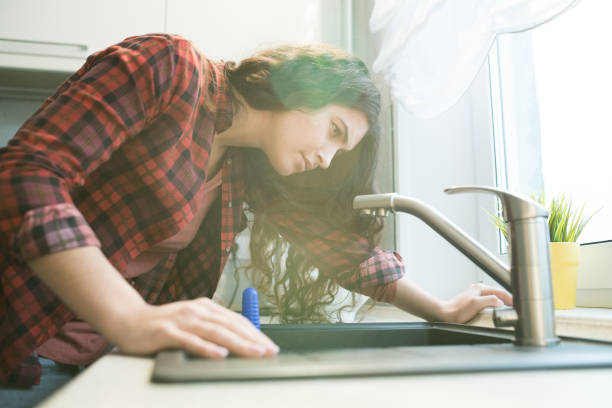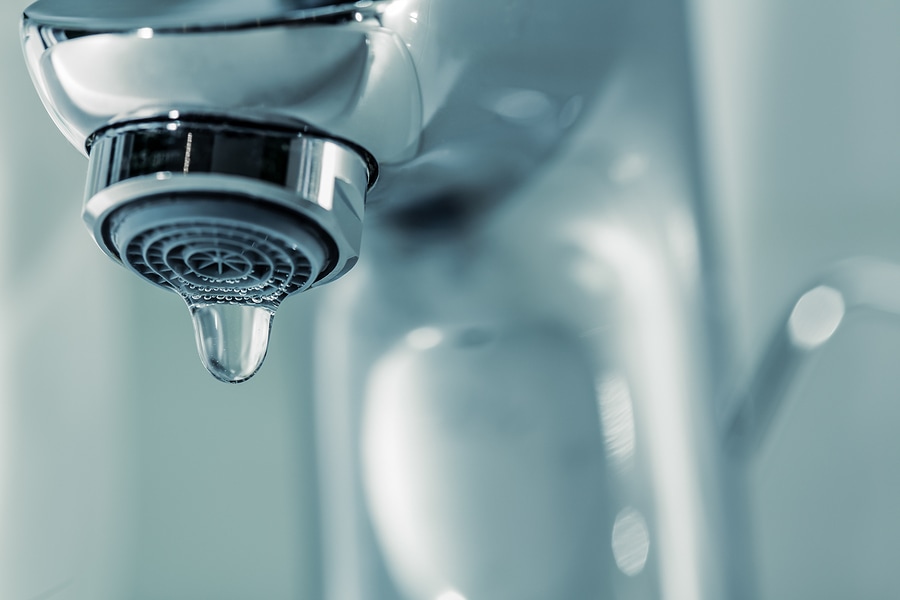Our Importance of Correcting a Leaking Faucet
Our Importance of Correcting a Leaking Faucet
Blog Article
We've discovered the article about 4 Common Reasons for a Leaky Faucet listed below on the internet and felt it made perfect sense to relate it with you in this article.

Leaking faucets might feel like a minor hassle, yet their effect exceeds simply the annoyance of the sound. From wasting water to incurring unnecessary monetary costs and health and wellness risks, disregarding a leaking tap can bring about numerous consequences. In this write-up, we'll look into why it's important to resolve this common house issue quickly and effectively.
Wastefulness of Water
Ecological Effect
Trickling taps add considerably to water wastefulness. According to the Environmental Protection Agency (EPA), a solitary tap leaking at one drip per second can squander greater than 3,000 gallons of water each year. This not just stress water sources yet additionally impacts ecological communities and wildlife dependent on them.
Step-by-Step Guide to Fixing a Dripping Tap
Devices Required
Before attempting to repair a leaking faucet, collect the needed tools, including an adjustable wrench, screwdrivers, replacement components (such as washing machines or cartridges), and plumber's tape.
Typical Faucet Issues and Their Solutions
Identify the sort of faucet and the certain issue causing the drip. Typical issues consist of worn-out washing machines, corroded valve seats, or malfunctioning O-rings. Refer to producer instructions or on-line tutorials for detailed support on repair services.
Financial Prices
Boosted Water Expenses
Past the ecological impact, leaking faucets can blow up water bills substantially. The gathered wastage with time converts right into greater utility costs, which can have been stayed clear of with timely repairs.
Prospective Building Damages
Furthermore, prolonged dripping can result in damage to components and surface areas surrounding the tap. Water buildup can cause staining, deterioration, and also structural issues if left unattended, causing additional fixing expenses.
Health and wellness Problems
Mold And Mildew and Mold Growth
The consistent presence of dampness from a trickling tap produces an optimal environment for mold and mildew and mold development. These fungi not only endanger indoor air high quality yet additionally pose health and wellness threats, especially for individuals with breathing problems or allergic reactions.
Waterborne Conditions
Stationary water in dripping taps can become a breeding ground for bacteria and other virus, increasing the danger of waterborne diseases. Pollutants such as Legionella bacteria thrive in stagnant water, possibly bring about severe health problems when ingested or inhaled.
DIY vs. Professional Fixing
Benefits and drawbacks of Do It Yourself Fixing
While some might try to fix a dripping tap themselves, DIY repair work include their very own collection of obstacles. Without correct knowledge and tools, DIY attempts can worsen the concern or result in incomplete repair work, prolonging the issue.
Benefits of Hiring an Expert Plumber
Working with a specialist plumber makes sure that the underlying cause of the leaking tap is resolved effectively. Plumbing professionals have the knowledge and devices to identify and fix tap concerns successfully, conserving time and minimizing the risk of additional damages.
Environmental Responsibility
Specific Contribution to Preservation
Taking duty for repairing trickling taps aligns with wider initiatives towards water preservation and environmental sustainability. Every person's actions collectively make a considerable effect on protecting priceless resources.
Lasting Living Practices
By focusing on prompt repair work and adopting water-saving practices, people add to lasting living methods that profit both existing and future generations.
Safety nets
Routine Maintenance Tips
To prevent trickling taps, carry out routine upkeep such as cleaning up aerators, inspecting for leakages, and replacing damaged parts promptly. Additionally, think about installing water-saving tools or upgrading to extra effective components.
Relevance of Prompt Fixes
Addressing leaking taps as soon as they're observed avoids additional water wastage and potential damages, inevitably conserving both water and cash in the long run.
Influence On Home Worth
Perception of Well-Maintained Residential Property
Keeping a residential property in good condition, including addressing upkeep problems like trickling taps, boosts its perceived worth and charm amongst prospective buyers or lessees.
Impact on Resale Worth
Features with well-maintained plumbing components, including taps, command higher resale values in the realty market. Addressing dripping taps can add to a favorable perception during home assessments and arrangements.
Conclusion
Attending to a dripping tap exceeds mere convenience; it's a necessary step toward conserving water, minimizing financial expenses, and securing health and wellness and home. Whether with DIY repair work or expert help, doing something about it to take care of trickling taps is a little yet impactful means to advertise responsible stewardship of resources and contribute to a much healthier, more sustainable future.
Most Common Reasons for a Leaky Faucet and How to Stop the Drip
Whether it’s your kitchen faucet leaking or a bathroom faucet leaking, one leaky faucet can waste anywhere from three to 30 gallons of water every single day. If the constant drip-drip-drip doesn’t get your attention, your water bill will. The good news is that, by following a few simple steps, chances are pretty good you can fix the problem yourself.
Why is it dripping?
Before you start taking things apart, let’s break down some of the most common causes of a leaky faucet.
Bad O-ring.
A cartridge is a valve that controls the flow of water into the faucet spout. On cartridge faucets there’s an O-ring—the little disc attached to the stem screw that holds the faucet handle in place. If it’s loose or worn-out, it can cause your sink handle to leak. Of course, the cartridge itself could be worn out. If that’s the case, make sure you replace it with the exact same kind.
Corroded valve seat.
The valve seat connects the faucet and the spout. If the leak seems to be coming from the spout, it might be because a buildup of water sediment has corroded the valve seat.
Worn-out washers or seals.
A leaky spout could be caused by a bad washer that rests against the valve seat. It’s just a matter of time before friction takes its toll. It could also be the wrong size washer or one that’s been installed incorrectly. Water sediments can also corrode inlet and outlet seals.
Water pressure.
If the faucet only drips now and then, or when you turn the handles a certain way, you should probably check your home’s water pressure.
Loose or broken parts.
The adjusting ring and packing nuts in the stream screw can become loose over time, causing your sink handle to leak. Try tightening or replacing the packing nut. If the leak is coming from the pipes underneath the sink, you probably have a broken pipe or fitting. If that’s the case, you should definitely call a plumber.
Know your faucet.
Faucets come in a variety of types. Each one has its own assembly—and its own possible causes of leaks. Learning about the four most common kinds of faucets will help you know how to take them apart and make any repairs.
How to stop a leaky faucet
Fixing that leaky faucet doesn’t have to take a lot of time, money, or expertise. It’s usually a simple matter of replacing a worn-out washer or gasket, a loose O ring, or another part. Chances are really good you can do this yourself if you follow these simple steps.
Shut off the water.
Before you tackle the faucet, cut off the water supply to the sink. There should be one valve for hot and one for cold. Hand-turn them clockwise with your hands till they close. If there are no valves under the sink, head to the basement and shut off the main water supply to the house. Then turn on the faucet until it empties out the water that’s still in the line and you’re ready to start. It’s a good idea to cover the sink drain with a plug or a rag so you don’t lose any small pieces and parts while you’re working.

I was introduced to that report about What Causes Leaky Faucets & How To Fix Them from a buddy on another web address. Are you aware of another person who is excited about the niche? Do not hesitate to promote it. I love reading our article about Why Is It Important To Fix Your Leaking Tap/Faucet?.
Report this page